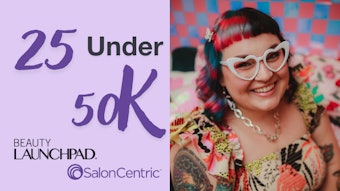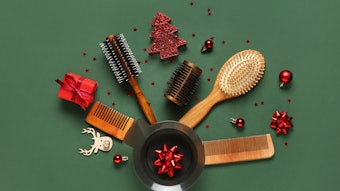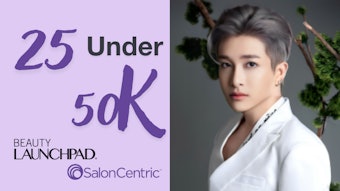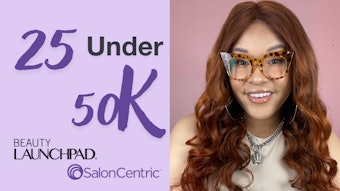
Damage: It’s probably the biggest buzzword among lash enthusiasts. Everyone lives in fear of potential lash damage—and well they should. It’s important for the client and lash artist alike to take heed of the potential dangers associated with a lack of education and unpracticed techniques. That being said, true lash damage (i.e., long-term or even permanent harm to lashes) is not exceedingly prevalent. And yet, it’s something—seemingly across the board in beauty, from hair to nails—that clients worry about. Therefore, it’s up to you to understand and educate your clients about the real pitfalls of lash enhancements. To help recognize the differences, Tussanee Luebbers, owner and lead trainer of Integrity Lash, weighs in.
There are two types of damage: one impacts the body of the native hair and the other affects the hair follicle, she explains. To understand the former, think about hair and nail services.
RELATED: How Lash Lifting and Tinting Help Your Clients and Boost Your Bottom Line
“Chemical treatments, like color or tinting, cause the cuticle of the hair to open or swell in order to get color pigments in,” she says. “While these processes can leave visible changes to the hair (for example, causing it to become brittle and sometimes break off), they don’t lead to permanent damage.” The same holds true for nails. Repeatedly picking off nail polish or gel, as well as over-filing the natural nail, can remove layers from the nail plate, resulting in thin or weak nails. But the damage associated with the weakened nail is temporary, Luebbers emphasizes. Because there was no damage done to the nail matrix (where the nail is produced), the natural nail will eventually grow out healthy again.
Now, let’s think about lashes: “The basic extension service consists of gluing a synthetic extension fiber with a cyanoacrylate adhesive to an isolated native hair,” Luebbers explains. “This in and of itself is not damaging. But when the extension is removed, even if done with a chemical solvent, it’s safe to say that some of the hair’s outermost layer (the cuticle) will also be removed.”
This is one explanation for why clients feel they have sparse lashes when they have their extensions removed. But like hair and nails, this type of superficial damage is only temporary.
RELATED: Our 4th Annual Tool Guide Featuring the Latest and Greatest Innovations
True damage is permanent, and this is a result of causing injury to the follicle itself. “The follicle is the ‘engine’ that produces hair. Unlike the shaft of hair, it’s a living structure,” Luebbers says. “When this structure is damaged, it can permanently alter the ability to produce hair.” Follicle damage can occur inadvertently through extension services. “When lashes are glued together and growing at different rates, the fast-growing lash can pull on a slower growing lash and cause damage,” she explains. “The long-term effects of this can cause scarring to the follicle.” This is why it’s exceedingly important to perfect your isolation techniques to prevent this from happening.
But there’s good news, too: “Our eyes are more sensitive than our scalp, and we are more acutely aware of extraordinary tension on any single lash follicle,” Luebbers says. Most people will seek professional relief immediately, and if they can’t, they’ll likely remedy the situation by pulling out the lashes themselves. “Fortunately, this sensitivity compels intervention usually before long-term damage can occur,” she says. And for those worried about occasionally pulling out a lash hair? Don’t be. “While pulling out the same lash can be deleterious over time and lead to a miniaturization of the follicle over decades, it’s not a method of permanent hair removal. It’s more damaging to exert a constant pulling force on that follicle over time than to repeatedly pull it out,” Luebbers relates.
There are plenty of myths associated with the beauty industry, and lashes are no different. It’s up to you, the professional, to talk to your clients, using the correct verbiage, and explain the differences between changes to the hair and permanent damage to the follicle. Small changes over time can make a big impact.
[Image: Getty Images]











